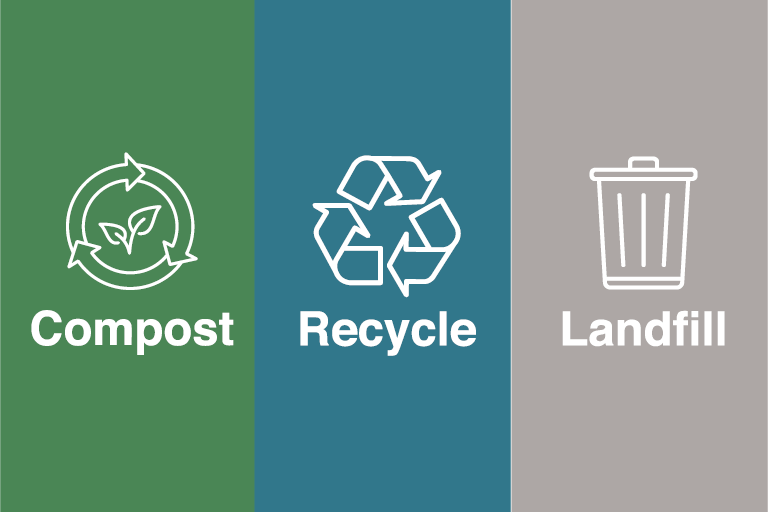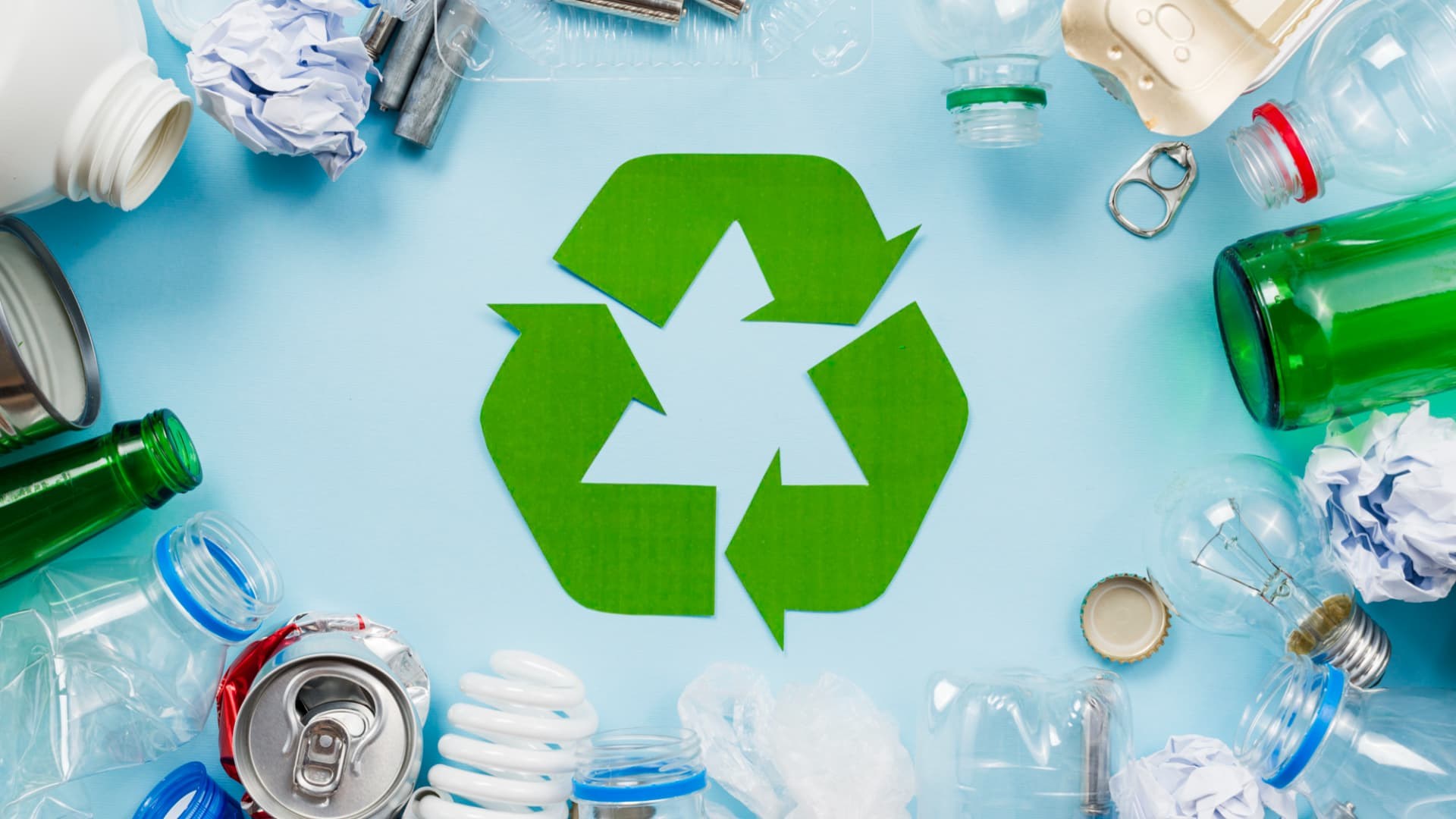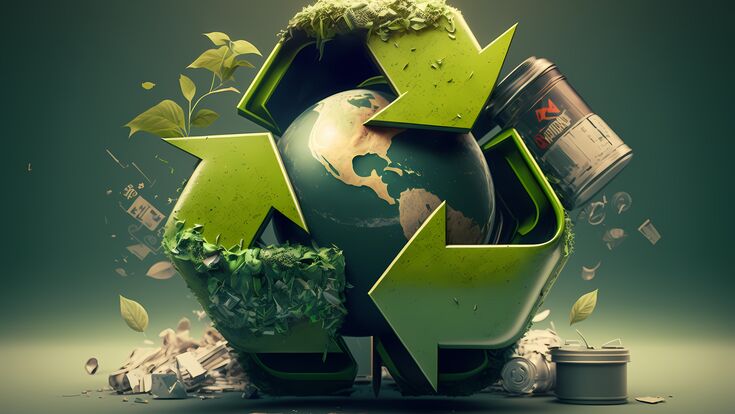Comprehending the Classification and Handling of Numerous Sorts Of Waste
Efficient waste administration is essential for ecological sustainability, calling for a thorough understanding of the classification and handling of different waste kinds. Household waste, industrial byproducts, harmful materials, digital refuse, and organic residues each necessitate distinct procedures to make sure safety and security and decrease eco-friendly damage.

Household Waste
Household waste, encompassing a broad range of thrown out materials created from everyday living tasks, represents a significant part of the general waste stream - recycling lives services. This classification consists of natural waste such as food scraps, backyard clippings, and paper items, along with not natural products like plastics, metals, and glass. The diverse nature of family waste necessitates reliable category and monitoring to reduce ecological effect and promote sustainable living practices
Reliable home waste administration starts with segregation at the resource, assisting in recycling, composting, and secure disposal. Organic waste, for example, can be composted to produce nutrient-rich soil amendments, decreasing garbage dump concern and boosting dirt wellness. Recyclable materials, including paper, glass, and particular plastics, can be processed and repurposed, conserving sources and reducing power usage connected with new material manufacturing.
Furthermore, hazardous family waste such as batteries, electronic gadgets, and cleaning chemicals requires specialized taking care of to prevent soil and water contamination. Public awareness projects and convenient disposal choices play critical functions in making certain correct disposal and recycling of these products. By executing robust waste reduction techniques and fostering neighborhood engagement, municipalities can substantially alleviate the ecological footprint of family waste.
Hazardous Waste
Industrial waste, a major contributor to worldwide waste generation, includes a varied array of products produced by manufacturing, building and construction, and various other industrial activities. Reliable monitoring of commercial waste is vital for decreasing ecological impact and advertising sustainable methods.
The handling of industrial waste usually involves numerous processes: collection, disposal, therapy, and segregation. Collection systems are developed to efficiently collect waste materials from different sources within a commercial operation. Partition is essential, as it makes certain recyclable products are divided from non-recyclable ones, which can be routed in the direction of appropriate recycling or disposal channels. Treatment procedures, consisting of physical, chemical, and biological techniques, are used to minimize the poisoning, volume, and ecological effect of the waste. Disposal methods like landfilling or incineration are used for waste that can not be recycled or treated.
Taking on techniques such as waste minimization, source healing, and recycling can substantially reduce the burden of commercial waste on the setting, adding to even more sustainable industrial practices.
Hazardous Waste

The classification of contaminated materials is generally based upon its chemical and physical attributes. Hazardous wastes have unsafe substances that can cause unfavorable health and wellness effects even at low concentrations. Harsh wastes can damage or damage living cells and products. Combustible wastes can easily fire up, posturing fire dangers, while reactive wastes can create explosions or launch toxic gases upon contact with other compounds.
Efficient contaminated materials monitoring entails a number of crucial methods: recognition and partition of dangerous products, safe transportation and storage, and proper therapy and disposal. Therapy techniques might include chemical stabilization, neutralization, and incineration. Governing conformity is vital, directed by structures such as the Source Conservation and Recovery Act (RCRA) in the USA, which guarantees secure and ecologically sound monitoring of other contaminated materials.
Digital Waste
Digital waste, often abbreviated as e-waste, stands for an expanding obstacle in waste management as a result of the fast obsolescence of modern technology. This group incorporates a broad variety of thrown out digital tools, consisting of mobile phones, computers, televisions, and household devices. The intricacy of e-waste depends on its make-up; these things include a mix of important products such as gold and copper, in addition to hazardous materials like lead, cadmium, and mercury.

Regulations and policies, such as the European Union's Waste Digital and electric Devices (WEEE) Regulation, goal to promote accountable e-waste monitoring. These policies mandate suppliers to help with the collection and recycling of electronic items, thus minimizing the concern on landfills and minimizing ecological contamination.
Organic Waste
Organic waste, including naturally degradable products such as food scraps, lawn trimmings, and agricultural residues, comprises article a considerable portion of the community solid waste stream. This kind of waste is noteworthy not only for its volume but likewise for its potential environmental influence if not handled correctly. Organic waste can break down anaerobically in land fills, producing methane, a powerful greenhouse gas contributing to environment modification.
Proper handling of natural waste involves a number of strategies. Composting is a commonly taken on approach, changing organic materials into important garden compost that can enhance dirt and support sustainable farming. This process likewise reduces the volume of waste sent to land fills. One more strategy is anaerobic food digestion, which damages down natural issue in the absence of oxygen, generating biogas that can be made use of as an eco-friendly power source. In addition, diverting food waste from landfills through contribution programs can relieve hop over to here food instability while reducing waste.
Municipalities and businesses are progressively acknowledging the value of natural waste management. Implementing detailed organic waste reusing programs not just alleviates ecological effects but additionally straightens with more comprehensive sustainability goals, advertising a round economic climate where resources are constantly reused and repurposed.
Conclusion
Effective waste monitoring and ecological defense require a comprehensive understanding of the classification and handling of numerous waste kinds. Home, industrial, dangerous, electronic, and organic waste each require distinctive treatments for partition, disposal, and treatment. Appropriate monitoring minimizes environmental effect, conserves sources, and advertises sustainability. Executing suitable techniques for each waste type ensures risk-free and responsible waste administration techniques, ultimately contributing to the protection of ecosystems and public health and wellness.
Effective waste administration is pivotal for environmental sustainability, calling for an extensive understanding of the classification and handling of numerous waste kinds.House waste, encompassing a broad selection of discarded materials generated from day-to-day living activities, represents a substantial element of the overall waste stream.Industrial waste, a major factor to global waste generation, includes a varied range of products created by manufacturing, construction, and various other commercial activities (recycling lives services).Dangerous waste, a critical problem in waste monitoring, makes up products that present considerable dangers to human health and the atmosphere due to their harmful, harsh, flammable, or reactive buildings.Organic waste, encompassing naturally degradable products such as food scraps, lawn trimmings, and farming residues, makes up a substantial portion of the metropolitan strong waste stream